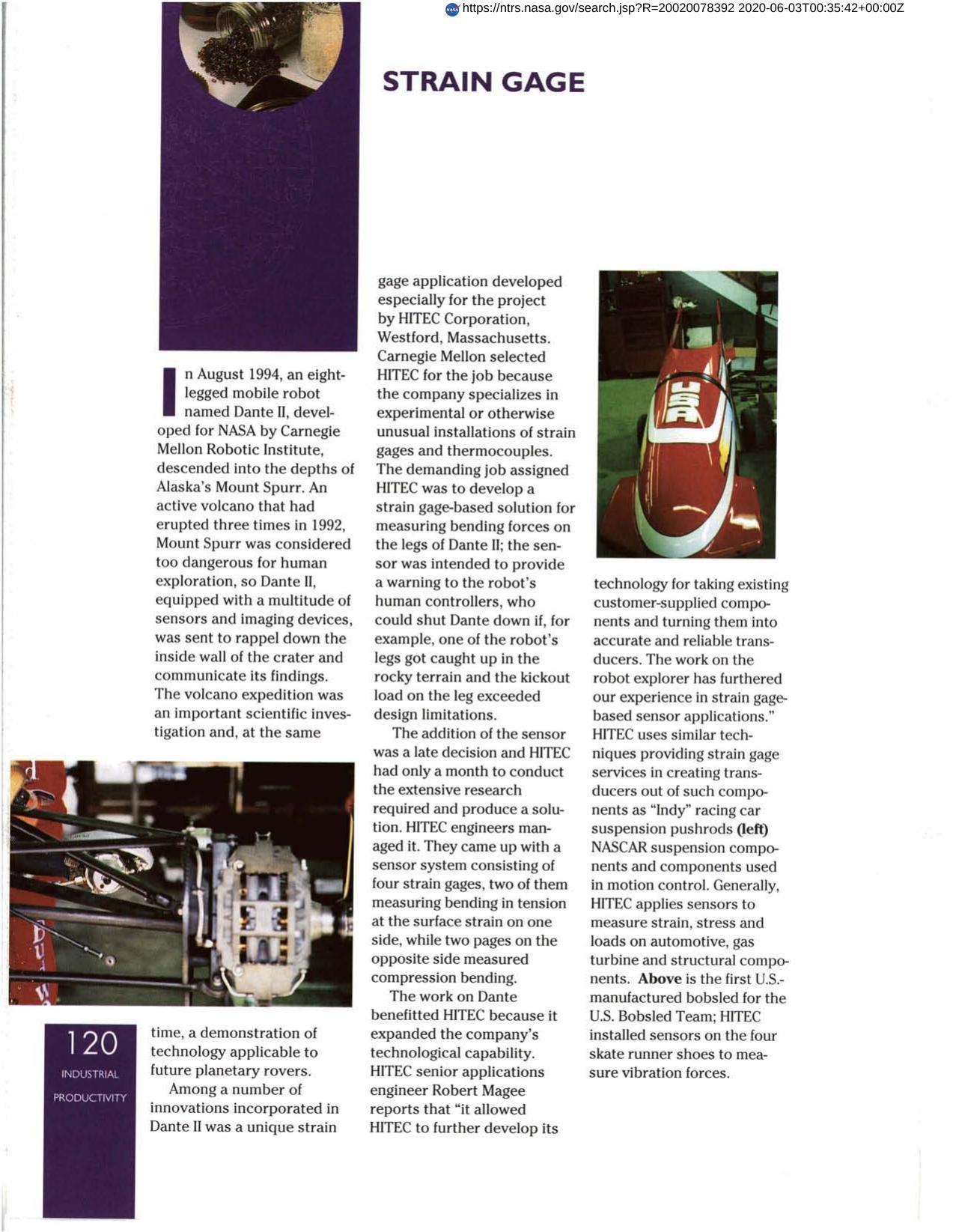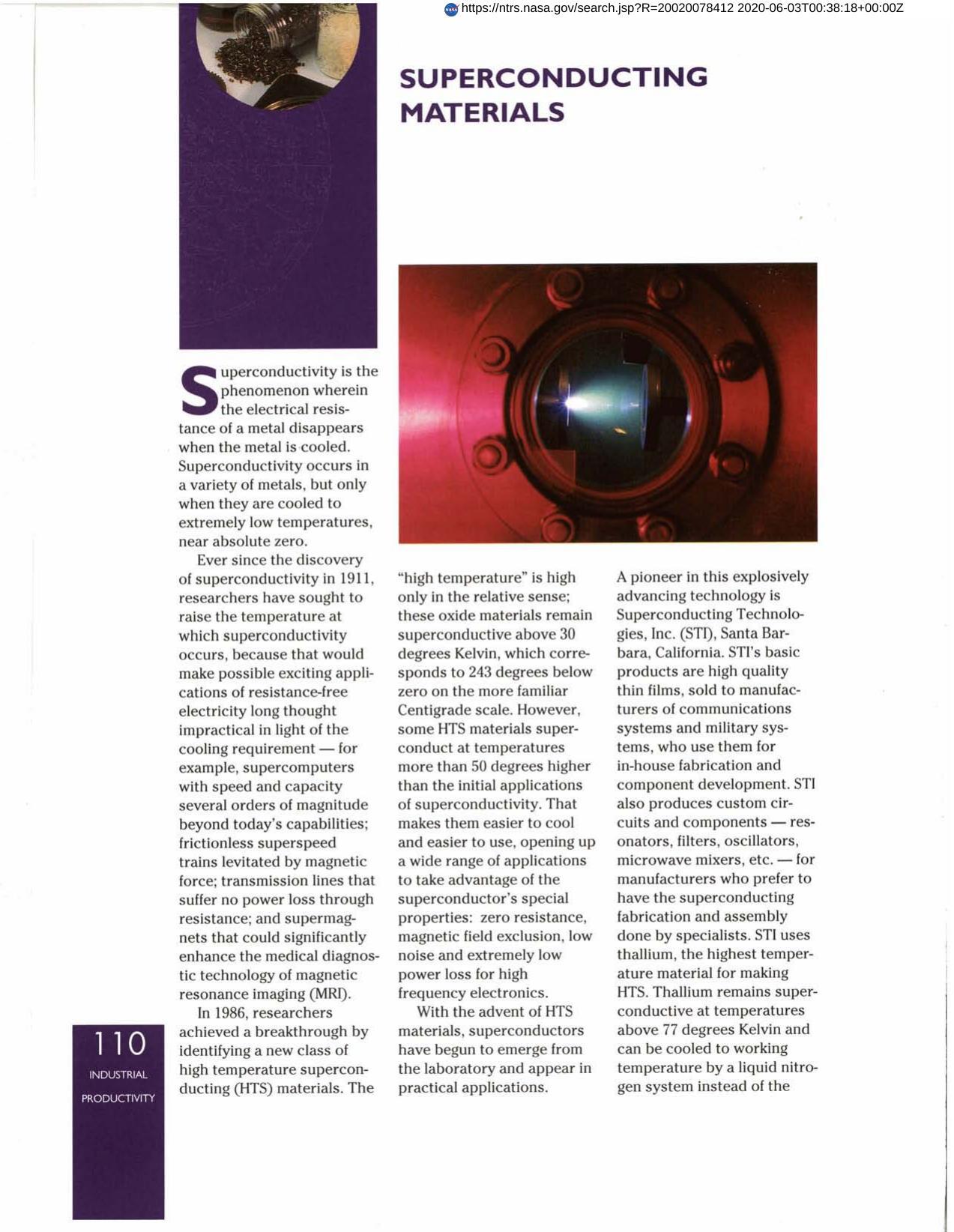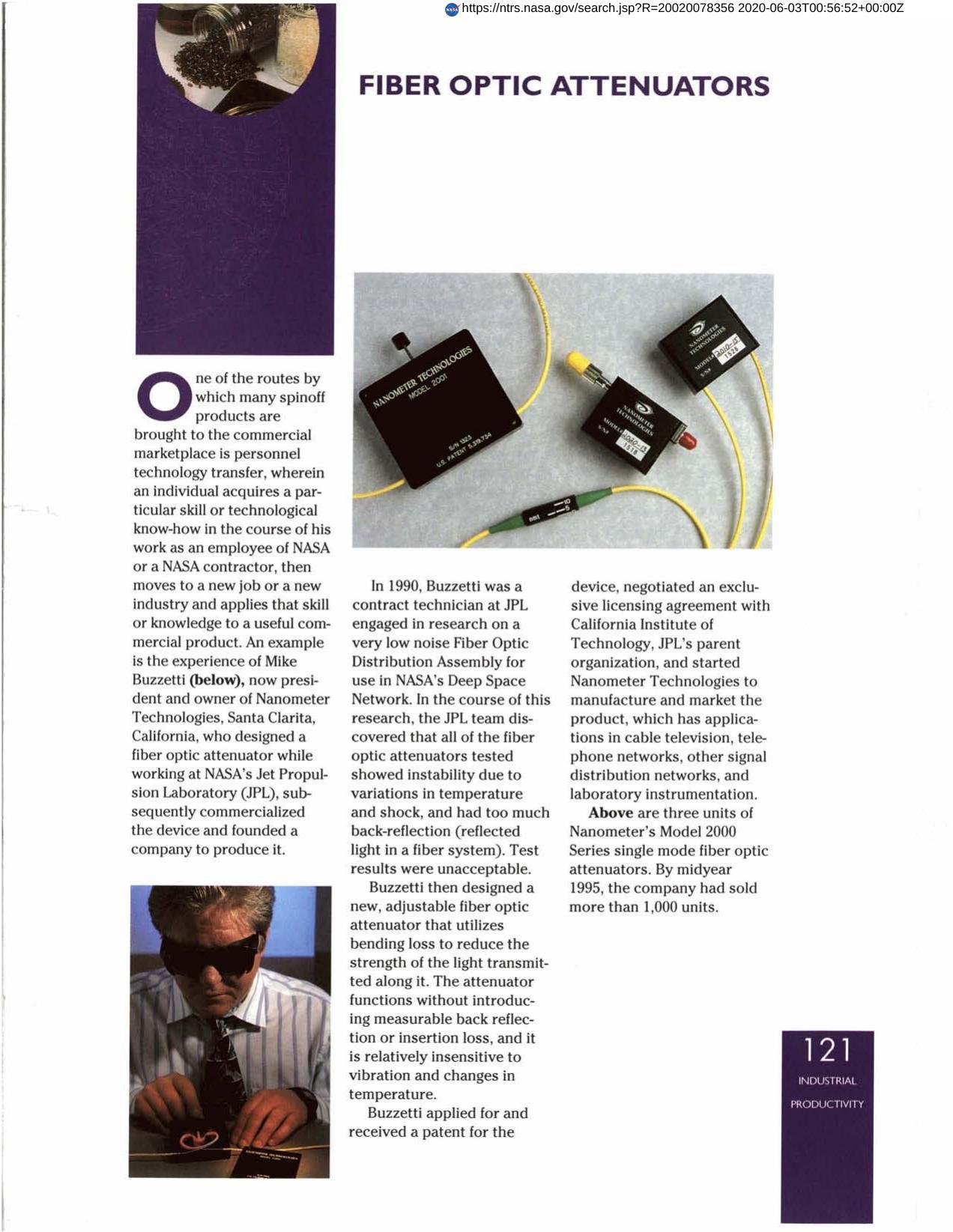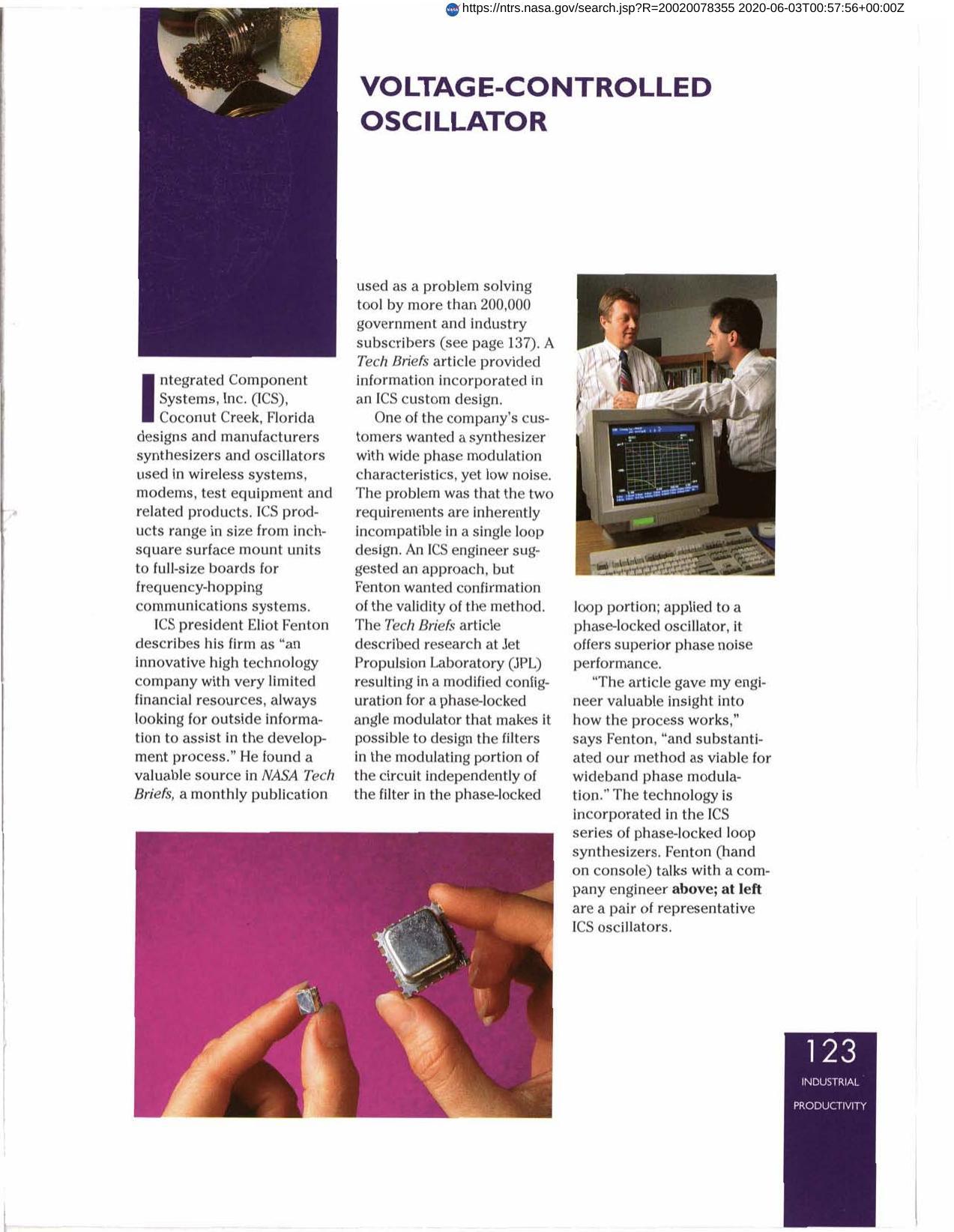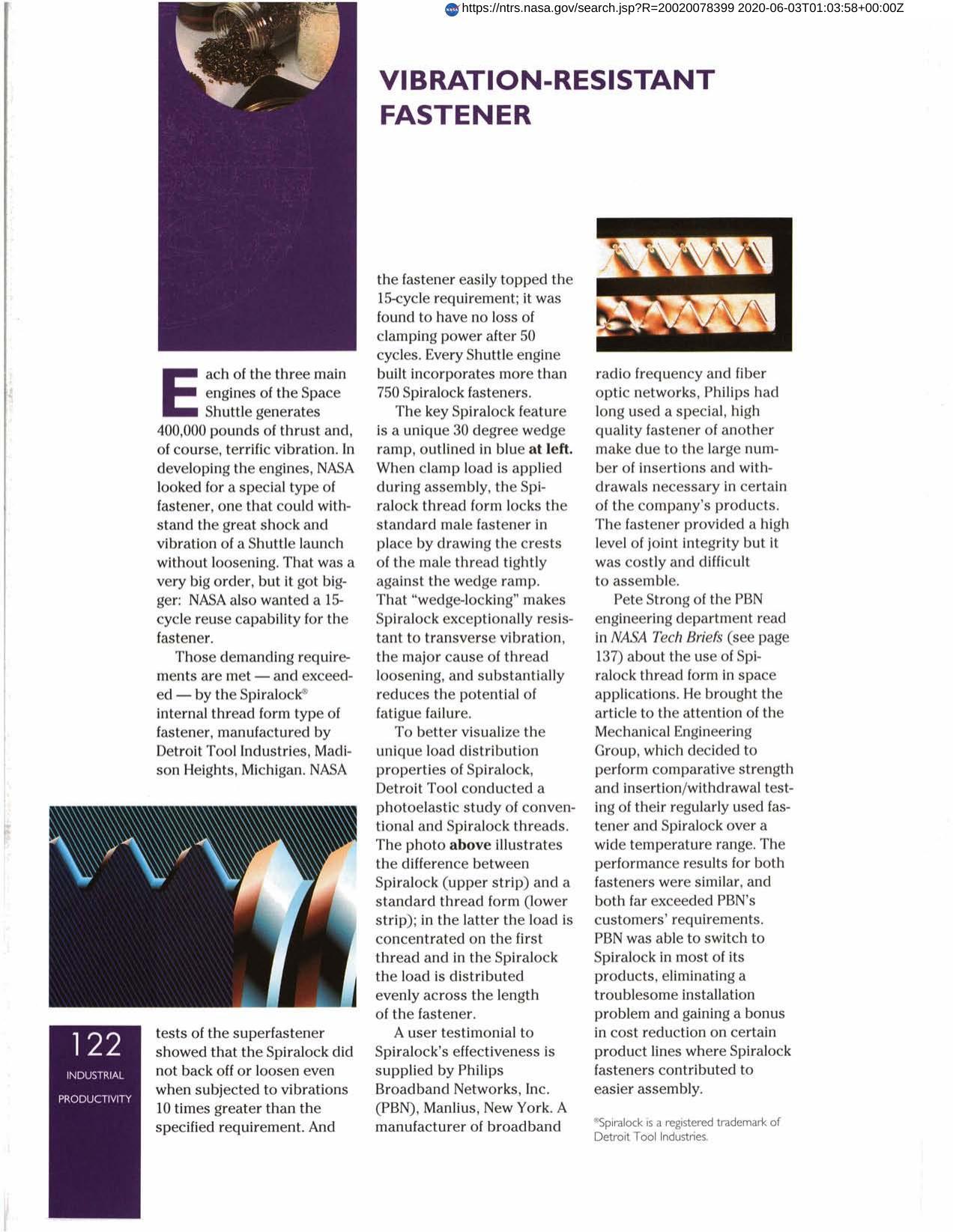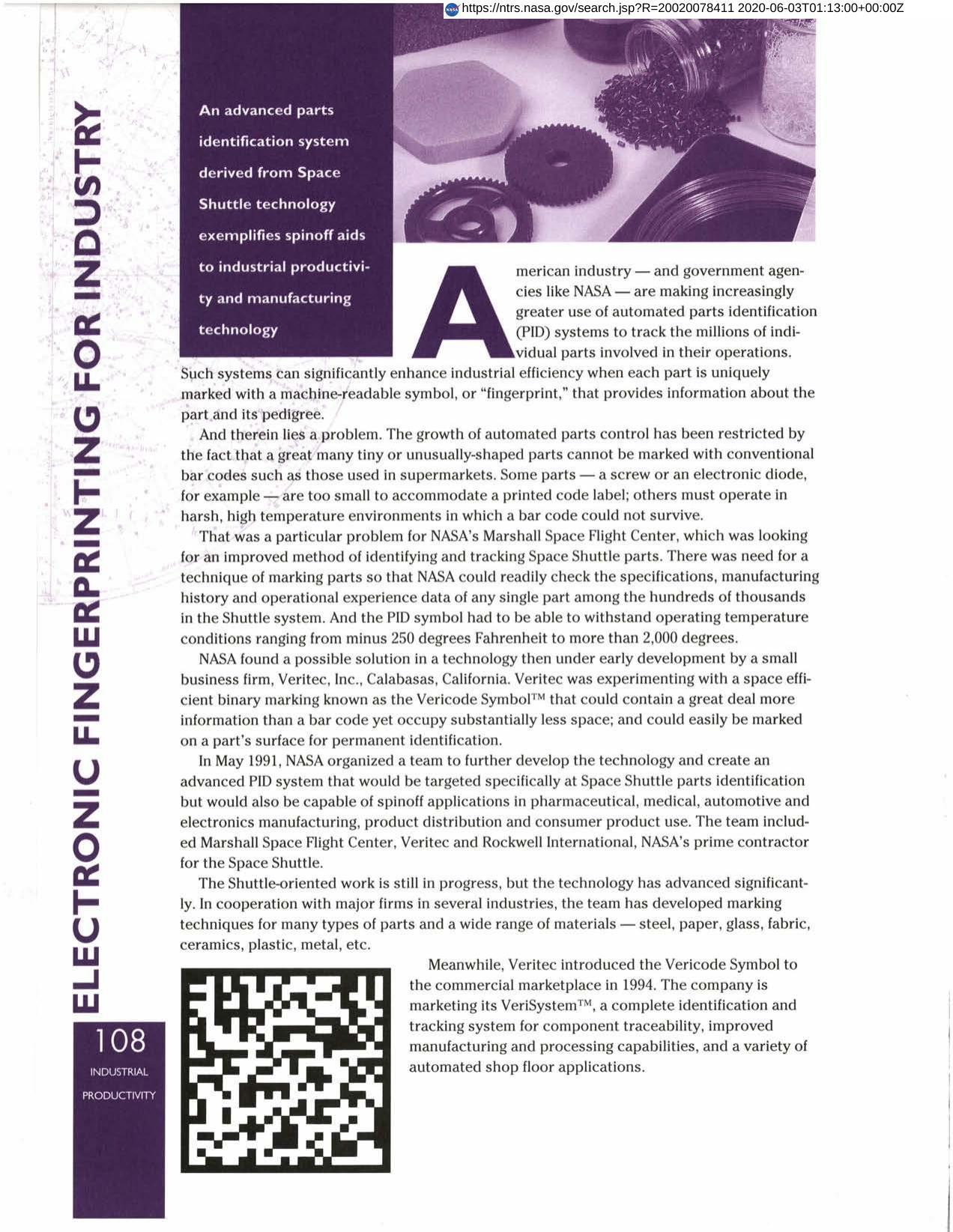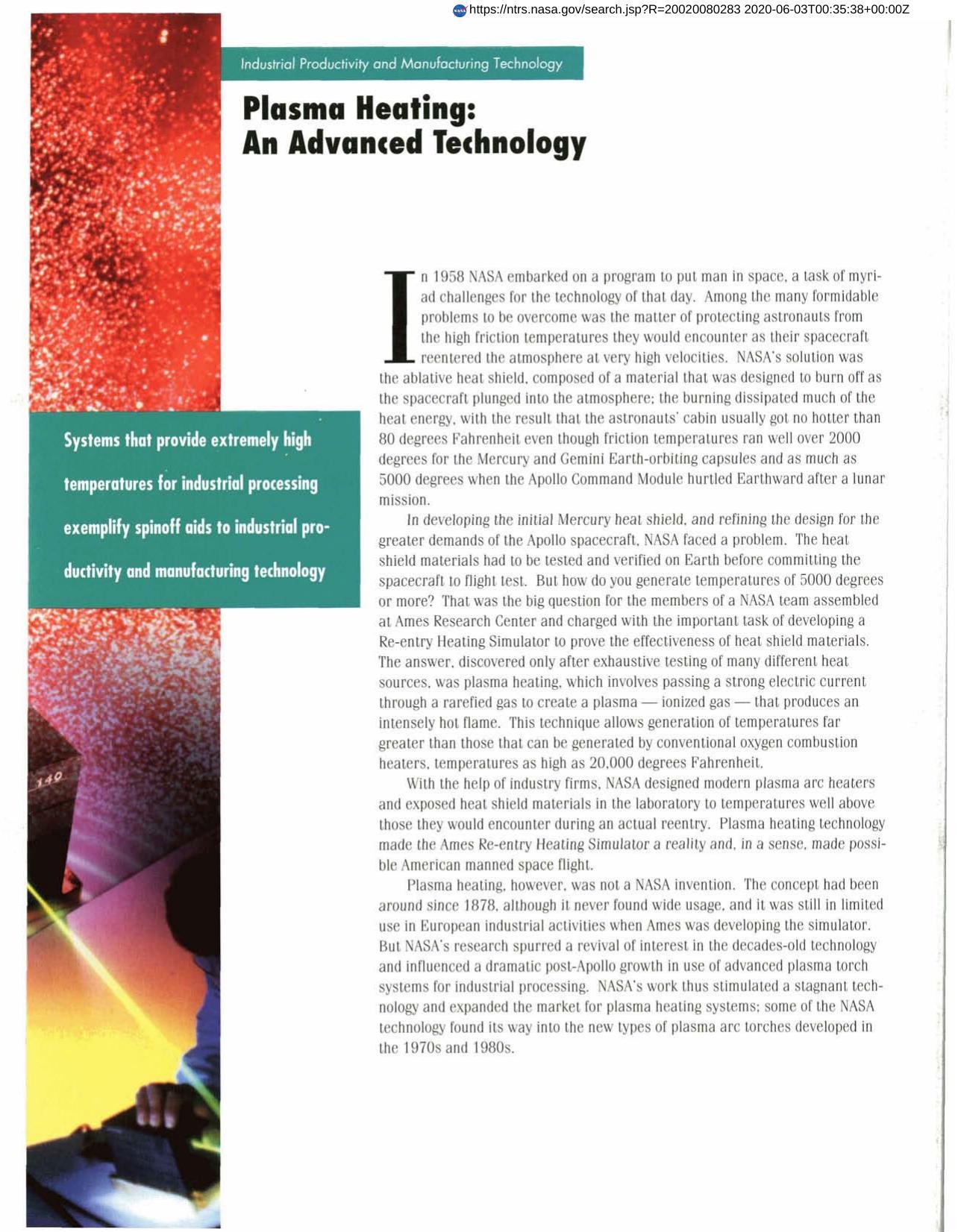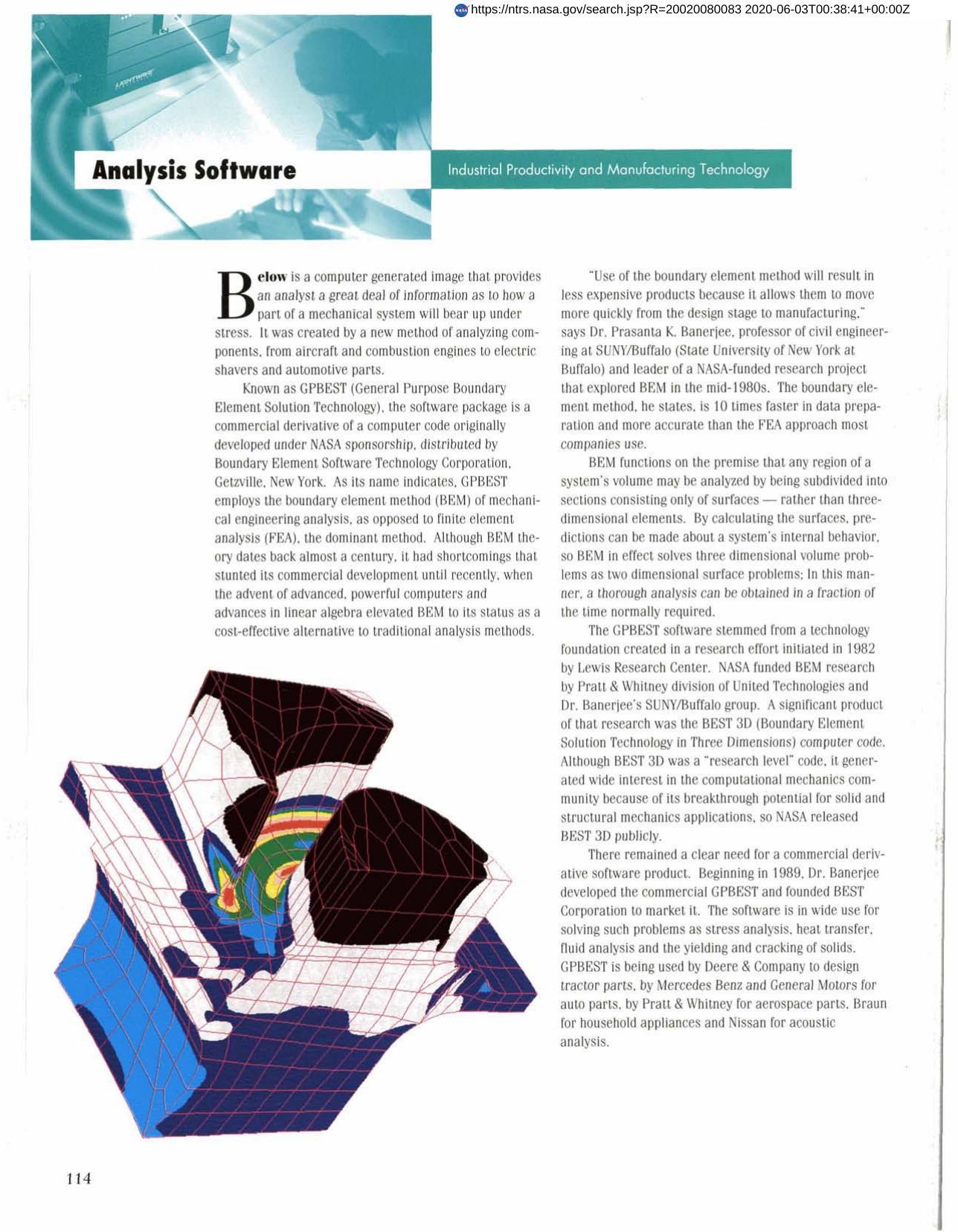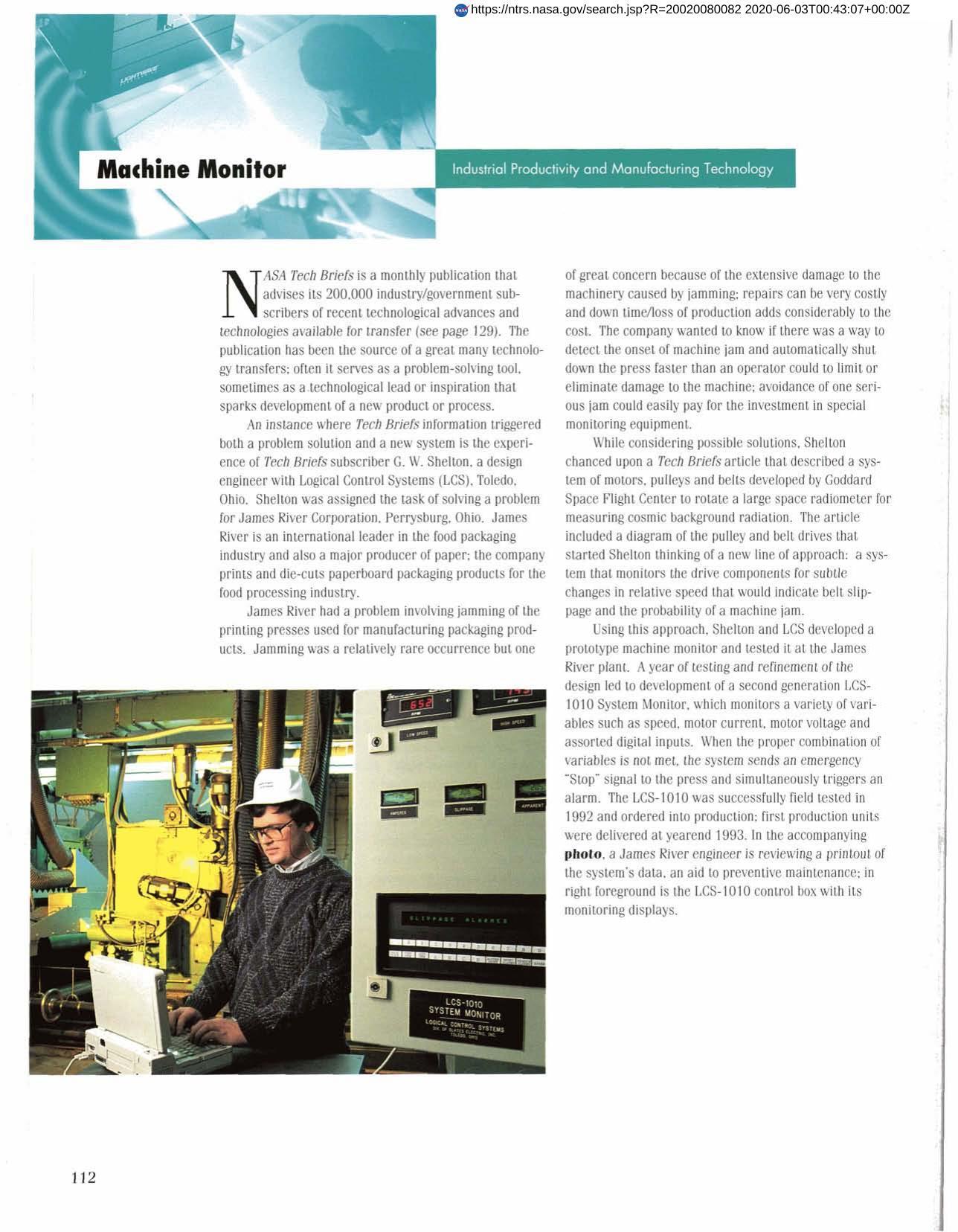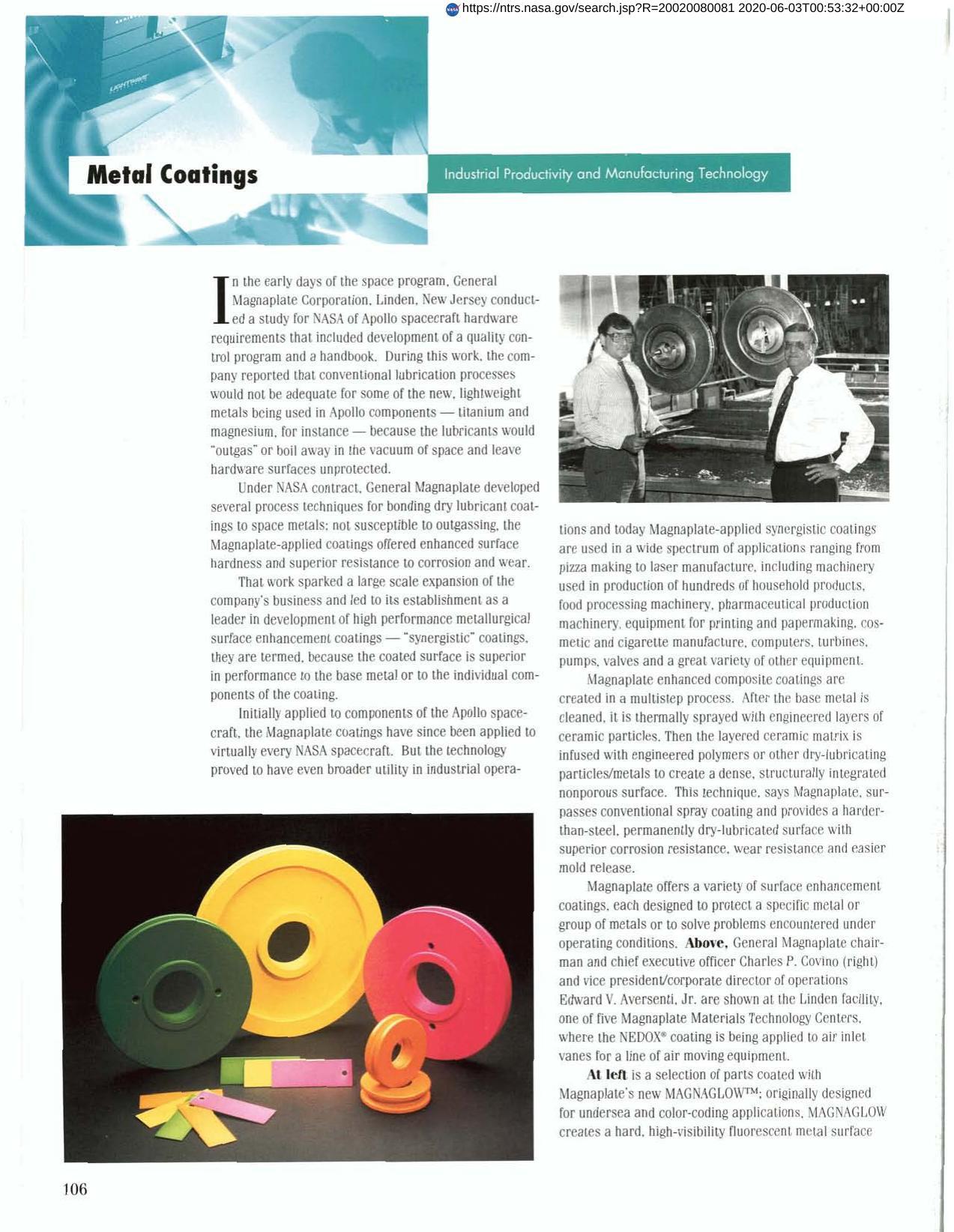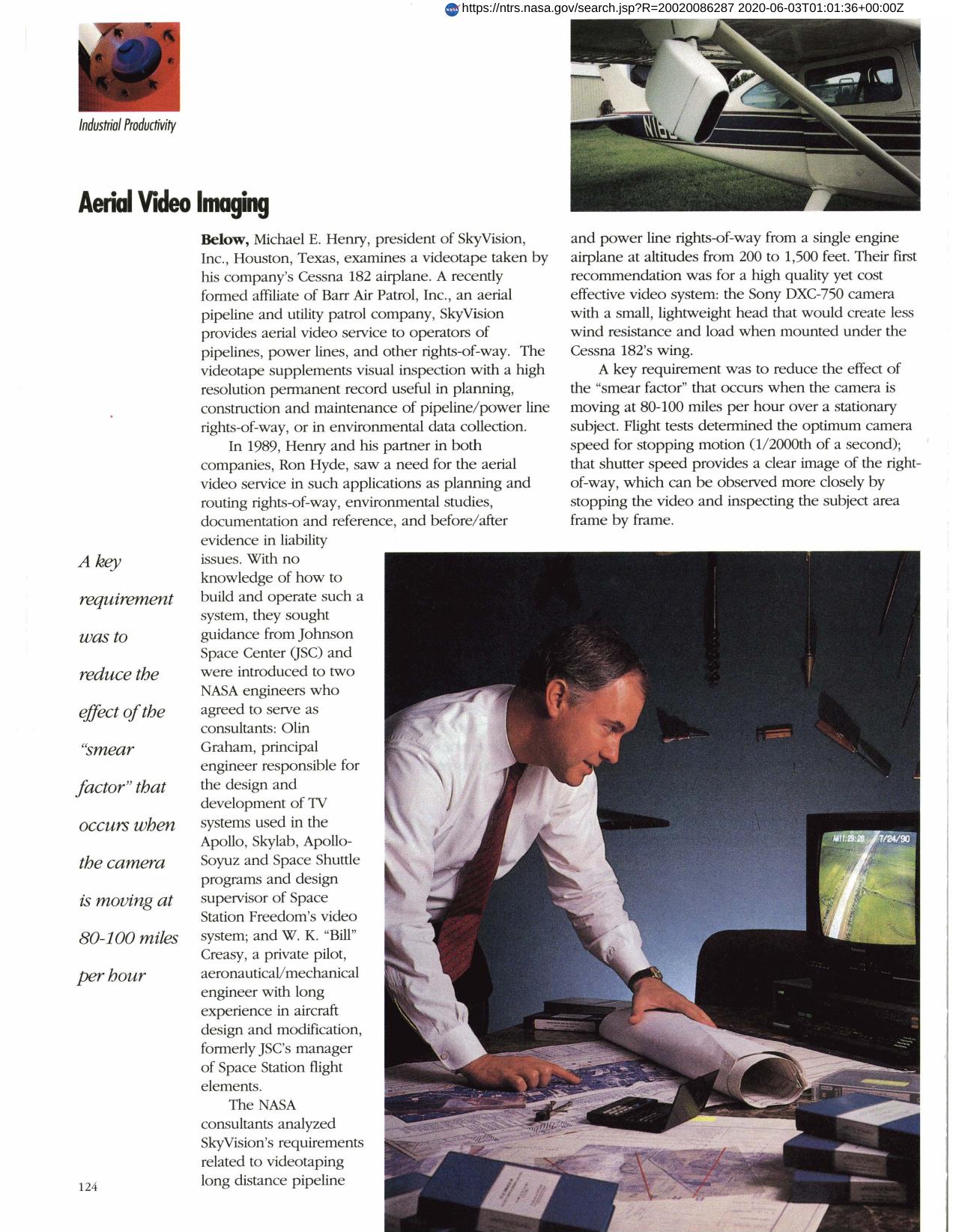
Aerial Video Imaging
When Michael Henry wanted to start an aerial video service, he turned to Johnson Space Center for assistance. Two NASA engineers - one had designed and developed TV systems in Apollo, Skylab, Apollo-Soyuz and Space Shuttle programs - designed a wing-mounted fiberglass camera pod. Camera head and angles are adjustable, and the pod is shaped to reduce vibration. The controls are located so a solo pilot can operate the system. A microprocessor displays latitude, longitude, and bearing, and a GPS receiver provides position data for possible legal references. The service has been successfully utilized by railroads, oil companies, real estate companies, etc.
Full article: http://hdl.handle.net/hdl:2060/20020086287

Aerial Video Imaging

Aerial Video Imaging




